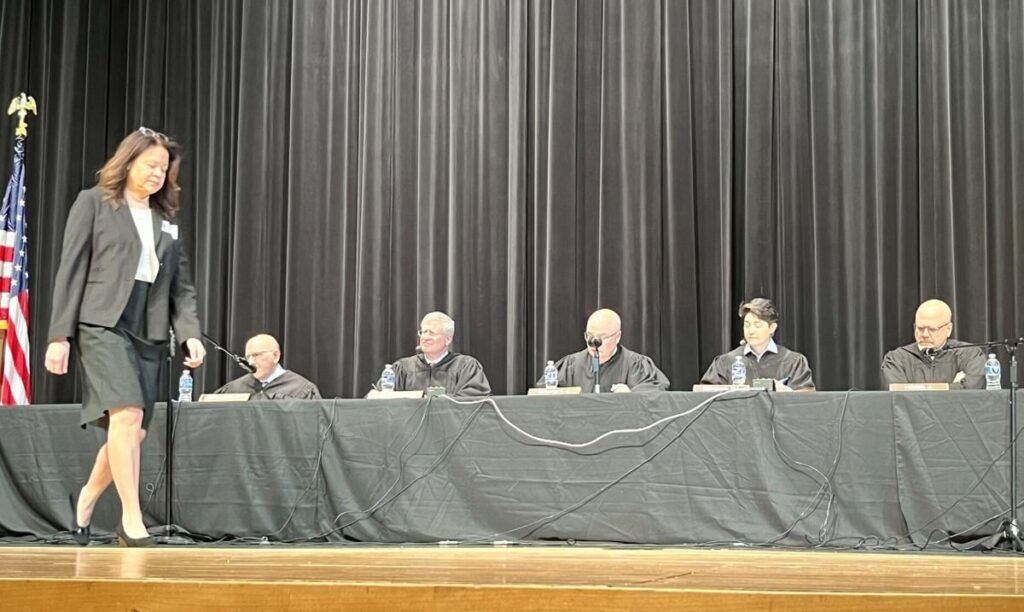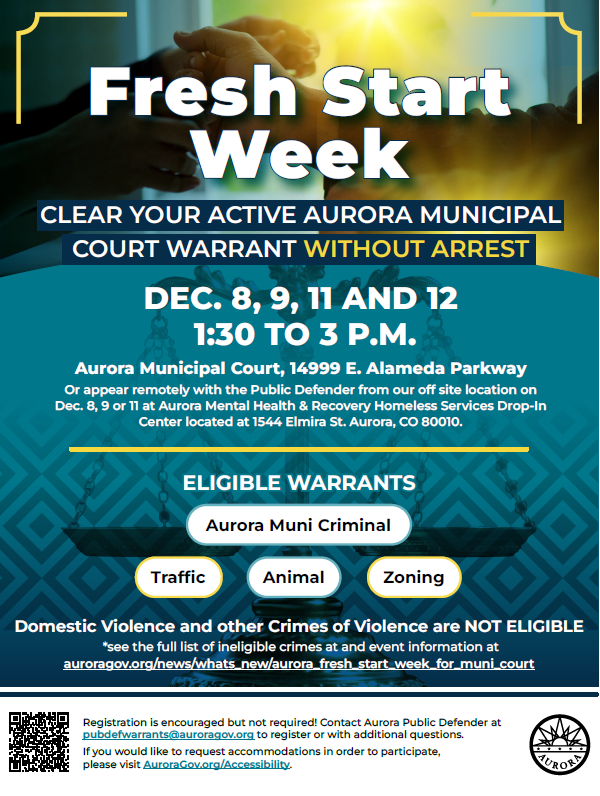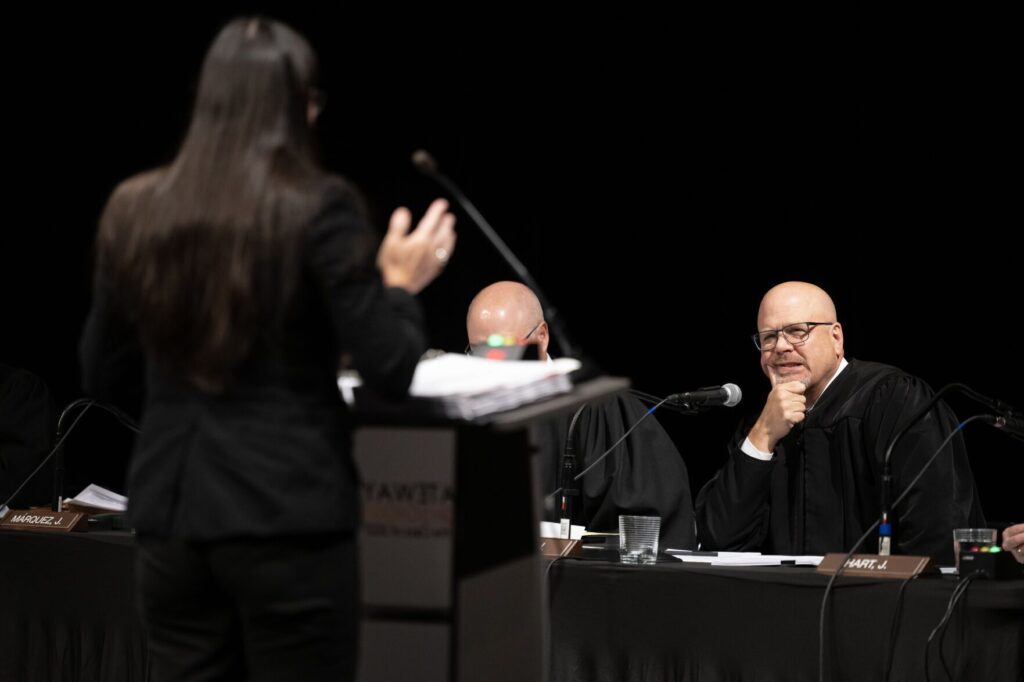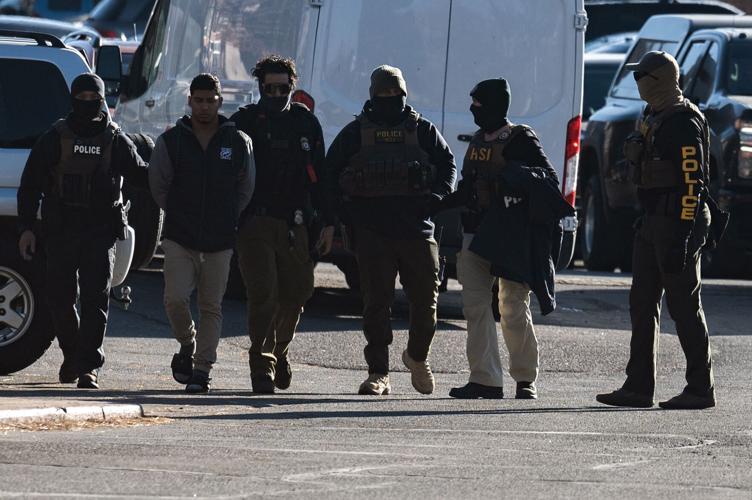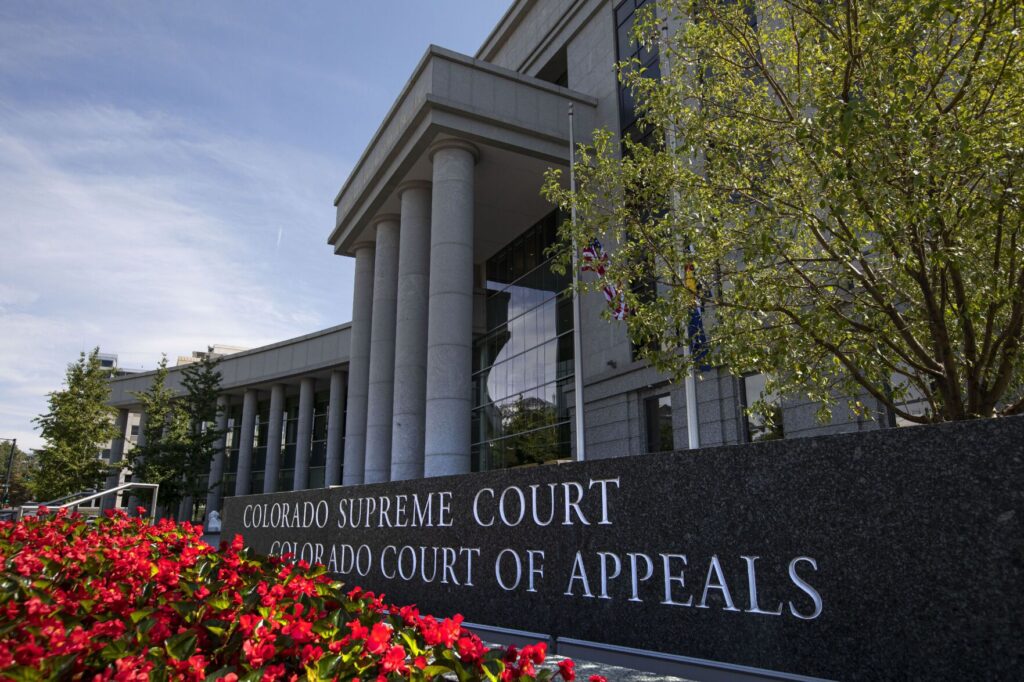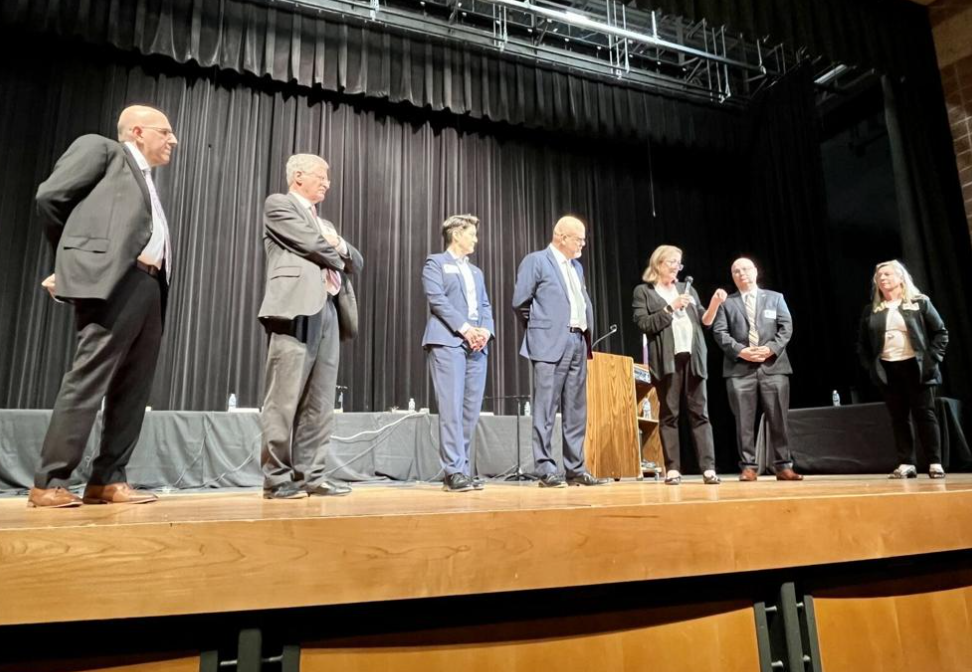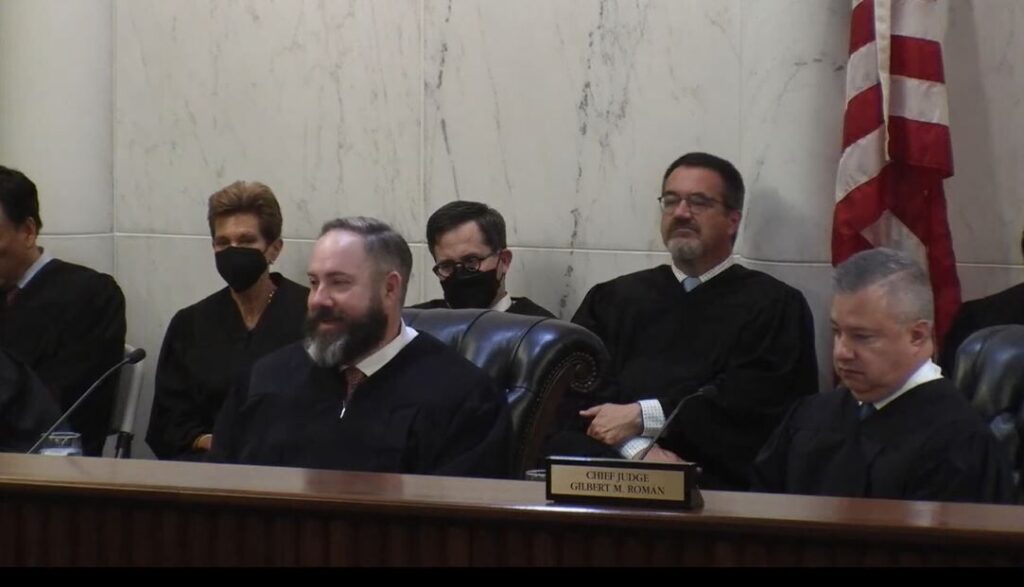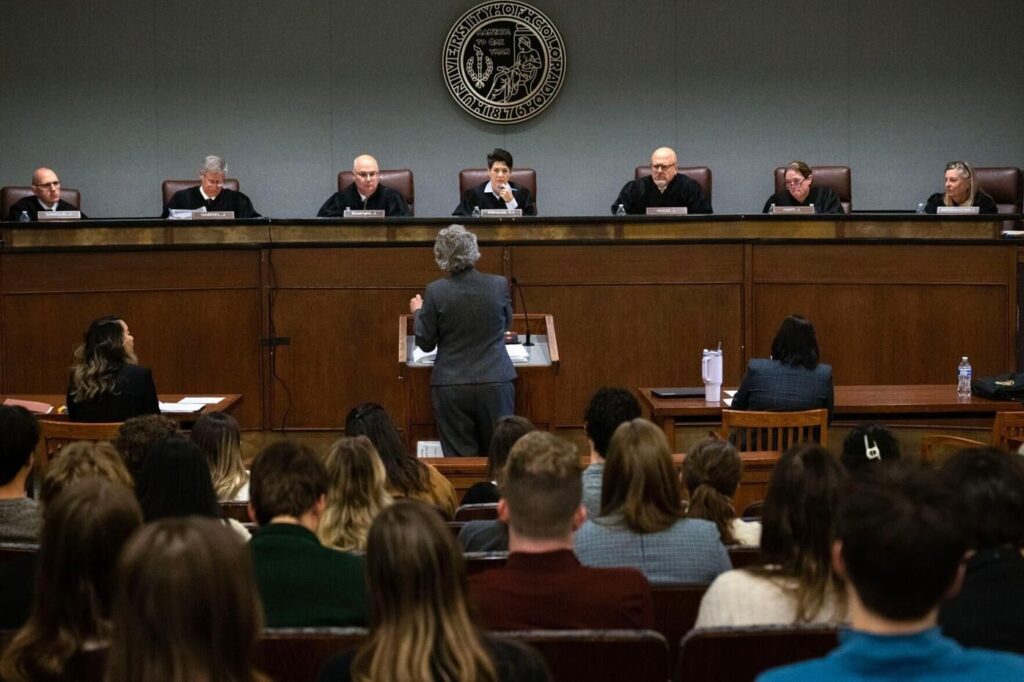Find the bias: Chief federal judge, lawyers talk about how to select a jury
For lawyers participating in jury selection in federal court, the key is to identify biased jurors, while also remaining conversational, taking notes, and paying attention to basic details.
“It is a very frequent occurrence that I’ve clarified how the juror pronounces his or her name and the attorney gets up there and butchers it because they’re not listening,” said U.S. District Court Chief Judge Philip A. Brimmer on Thursday. “Just like with you, someone butchers your name — you’d prefer someone got it right, especially because you just pronounced it correctly a little while ago.”
Speaking at the Alfred A. Arraj U.S. Courthouse to a roomful of attorneys, Brimmer and two trial lawyers presented a tutorial on voir dire, the portion of jury selection where attorneys speak to jurors. In federal court, Brimmer noted, judges can conduct voir dire entirely on their own. But he said most judges provide some time for the attorneys to participate.

U.S. District Court Chief Judge Philip A. Brimmer swears in U.S. Magistrate Judge Kathryn A. Starnella during her investiture on Oct. 13, 2023. Photo courtesy of Phil Weiser
David Beller, a longtime defense attorney, warned lawyers that while they seek to uncover jurors’ biases, they should not let their own preconceptions take over when questioning potential members of the jury.
“In juries, we as lawyers all of a sudden say, ‘OK, I have a middle-aged grandmother sitting on my jury. She’s White. I imagine she’s going to be very loving and very caring and very compassionate toward X, Y, Z,'” he said. “We’re immediately making those implicit biases. Our role as lawyers is to not do that.”
Brimmer recalled presiding over a criminal trial involving a Black defendant accused of defrauding White victims. The defense attorney asked to show a segment from the hidden camera show “What Would You Do?” depicting a White man, a Black man and a White woman all trying to steal a bike in public. Many people were suspicious of the Black thief, fewer were suspicious of the White thief and some bystanders even tried to help the White woman steal the bike.
“After that video, boom, everyone was on the same page,” he said, meaning the jurors understood implicit bias. Brimmer added he has sometimes been asked to play a video from the U.S. District Court based in Seattle, which teaches jurors about unconscious biases.
“That’s a very tricky subject and it’s hard to get to it,” he acknowledged. “You might need to even ask the judge for a little bit more time.”

Valeria Spencer, a prosecutor with the U.S. Attorney’s Office and a former state judge in the 18th Judicial District, said attorneys should think in advance who their side’s ideal juror would look like and who the opposing side’s ideal juror would be.
“The worst disaster is for people to not reveal they have an issue with the type of case you’re trying,” she said.
Jury trials uncommon
In 2022, Colorado’s U.S. District Court saw 51 completed jury trials, a relatively small number compared to the 3,374 civil and 2,505 criminal cases filed. Fewer than 1% of civil cases filed will end in a jury trial.
Some of the judges have patterned their courtroom protocols around the notion that the relative rarity of jury trials, coupled with the slowdown during the height of the COVID-19 pandemic, has made practitioners rusty. Judge Charlotte N. Sweeney, for example, routinely schedules oral arguments for motions, instead of deciding on attorneys’ written submissions alone.
“Part of the reason I’m doing this is if you are going to jury trial, you want this to look like it’s not your first time arguing in a court,” she said earlier this year.”

Attorney David Gartenberg applauds for U.S. District Court Judge Charlotte N. Sweeney at a legal event in Denver on July 21, 2023.
Do’s and don’ts of voir dire
The presenters performed two demonstrations for the audience with a group of mock jurors. Brimmer explained the pretend civil case being tried involved a Black, female plaintiff suing her employer and supervisor for his repeated unwelcome advances, inappropriate racial and sexual comments, and a hostile work environment.
The attorneys first demonstrated a “bad” voir dire: Spencer, representing the plaintiff, asked multiple basic yes or no questions, such as “Do you think any of you could tell if someone is telling the truth?” and “Will you be able to pay attention?” Brimmer interrupted her multiple times after she failed to note verbally how the jurors responded.
“Good afternoon!” shouted Beller, representing the defendants, when it was his turn. He spent several minutes attempting to charm the jurors, making small talk about the security line and asking jurors which magazines they read.
“That was not an ideal voir dire by either side,” Brimmer said afterward. Spencer and Beller elaborated they had not obtained any information about the jurors that was helpful to their sides.
The second simulation, demonstrating a “good” voir dire, featured Spencer eliciting from one juror that he was married for four years and had two children.
Turning to the juror next to him, Spencer asked point-blank: Do you believe him? Why do you believe him? Multiple jurors explained why they felt their fellow juror was telling the truth, including that it seemed highly improbable someone would lie under the circumstances.

FILE PHOTO: The Alfred A. Arraj U.S. Courthouse in downtown Denver. (Photo courtesy of United States District Court – Colorado)
Beller started by asking broadly what jurors thought about the #MeToo movement against sexual violence. He probed whether jurors believed it is appropriate to start from a place of believing accusers and disbelieving accused sexual harassers.
Afterward, Spencer explained she chose to immediately find out how jurors assess the credibility of strangers, given that her fictional client’s testimony would be key to the case.
“There’s going to be conflicting testimony and there’s going to be conflicting testimony within one person’s testimony from direct to cross-examination,” she elaborated.
Beller explained his questions about the #MeToo movement were designed to explore jurors’ biases — specifically, how their emotions may bias them.
“Find the issue that is going to ultimately — if your juror has bias on this issue, you lose. Identify it and ask about it and don’t be making assumptions about it,” he said.
Brimmer added the best practice is to have a conversation with jurors, but “there’s a little bit of tension there between a conversational tone and impressing upon them the seriousness of the case.”
In the presenters’ normal roles as criminal attorneys, “Valeria, she wants people to understand this a serious business here. It’s a criminal case and she wants you to convict someone,” Brimmer said. “By contrast, David wants you to understand, yipes, if you find him guilty, this person may be going to jail.”



